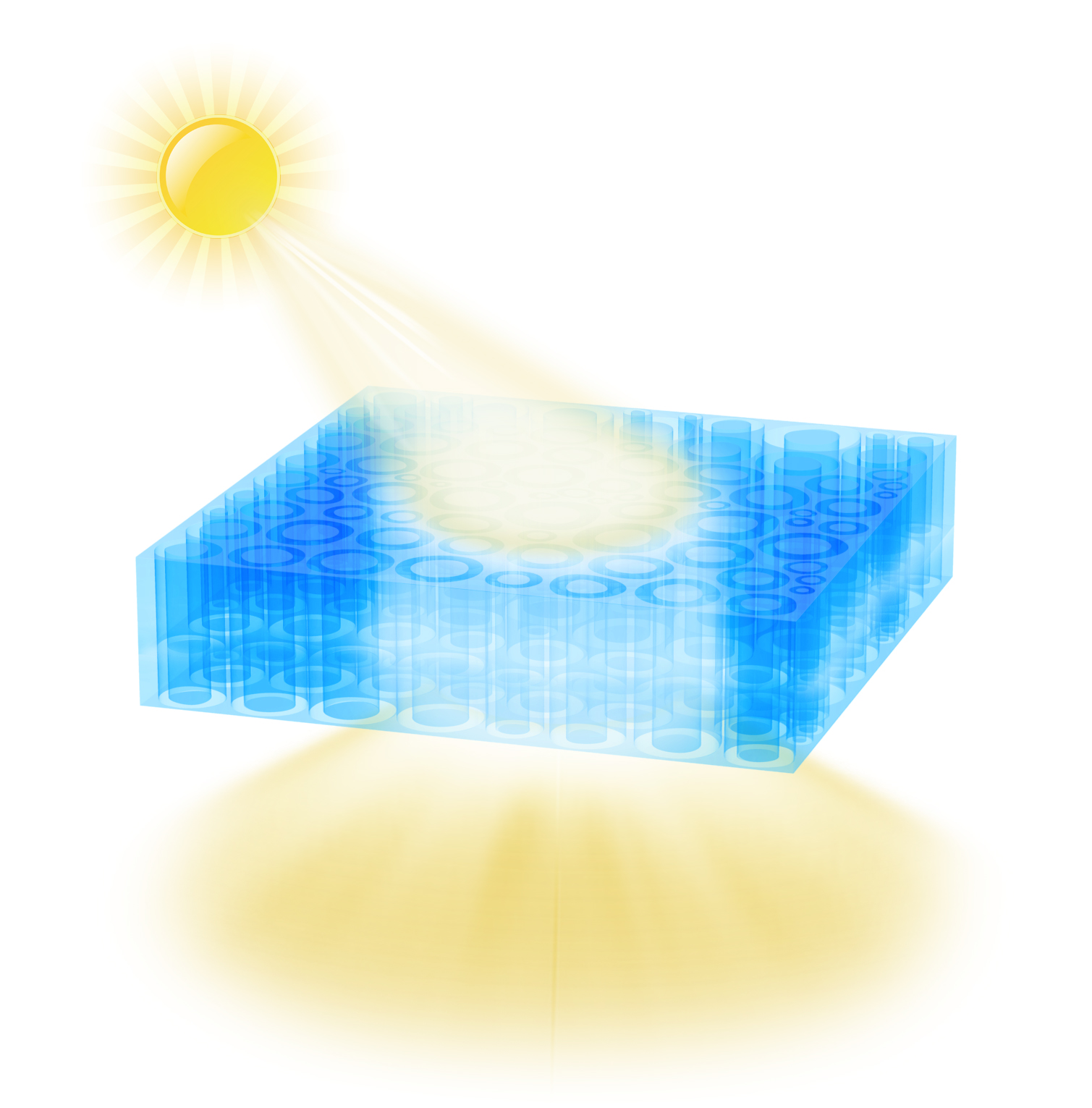Press Release
Wood Windows are Cooler than Glass
Study shows natural microstructures in transparent wood key to lighting & insulation advantages
FOR IMMEDIATE RELEASE August 16, 2016
CONTACT:
Martha Heil
301 405 0876
mjheil@umd.edu

Engineers at the University of Maryland (UMD) demonstrate in a new study that windows made of transparent wood could provide more even and consistent natural lighting and better energy efficiency than glass.
In a paper just published in the peer-reviewed journal Advanced Energy Materials, the team, headed by Liangbing Hu of UMD’s Department of Materials Science and Engineering and the Energy Research Center lay out research showing that their transparent wood provides better thermal insulation and lets in nearly as much light as glass, while eliminating glare and providing uniform and consistent indoor lighting. The findings advance earlier published work on their development of transparent wood.
The transparent wood lets through just a little bit less light than glass, but a lot less heat, said Tian Li, the lead author of the new study. “It is very transparent, but still allows for a little bit of privacy because it is not completely see-through. We also learned that the channels in the wood transmit light with wavelengths around the range of the wavelengths of visible light, but that it blocks the wavelengths that carry mostly heat,” said Li.
See the wood window in action: https://youtu.be/fhMHi0l2nfU
The team’s findings were derived, in part, from tests on tiny model house with a transparent wood panel in the ceiling that the team built. The tests showed that the light was more evenly distributed around a space with a transparent wood roof than a glass roof.
The channels in the wood direct visible light straight through the material, but the cell structure that still remains bounces the light around just a little bit, a property called haze. This means the light does not shine directly into your eyes, making it more comfortable to look at. The team photographed the transparent wood’s cell structure in the University of Maryland’s Advanced Imaging and Microscopy (AIM) Lab.
Transparent wood still has all the cell structures that comprised the original piece of wood. The wood is cut against the grain, so that the channels that drew water and nutrients up from the roots lie along the shortest dimension of the window. The new transparent wood uses theses natural channels in wood to guide the sunlight through the wood.
As the sun passes over a house with glass windows, the angle at which light shines through the glass changes as the sun moves. With windows or panels made of transparent wood instead of glass, as the sun moves across the sky, the channels in the wood direct the sunlight in the same way every time.
"This means your cat would not have to get up out of its nice patch of sunlight every few minutes and move over," Li said. "The sunlight would stay in the same place. Also, the room would be more equally lighted at all times."
Working with transparent wood is similar to working with natural wood, the researchers said. However, their transparent wood is waterproof due to its polymer component. It also is much less breakable than glass because the cell structure inside resists shattering.
The research team has recently patented their process for making transparent wood. The process starts with bleaching from the wood all of the lignin, which is a component in the wood that makes it both brown and strong. The wood is then soaked in epoxy, which adds strength back in and also makes the wood clearer. The team has used tiny squares of linden wood about 2 cm x 2 cm, but the wood can be any size, the researchers said.
More Information:
“Wood Composite as an Energy Efficient Building Material: Guided Sunlight Transmittance and Effective Thermal Insulation”
Tian Li and Mingwei Xu, et al.
Advanced Energy Materials, 2016
http://dx.doi.org/10.1002/aenm.201601122
About the A. James Clark School of Engineering
The University of Maryland’s A. James Clark School of Engineering is a premier program, ranked among the top 20 in the world. Located just a few miles from Washington, D.C., the Clark School is at the center of a constellation of high-tech companies and federal laboratories, offering students and faculty access to unique professional opportunities.
Our broad spectrum of academic programs, including the world’s only accredited undergraduate fire protection engineering program, is complemented by a vibrant entrepreneurial ecosystem, early hands-on educational experiences, and participation in national and international competitions.
The Clark School is leading research advancements in aerospace, bioengineering, robotics, nanotechnology, disaster resilience, energy and sustainability, and cybersecurity. From the universal product code to satellite radio, SMS text messaging to the implantable insulin pump, our students, faculty, and alumni are engineering life-changing innovations for millions. Learn more at www.eng.umd.edu.